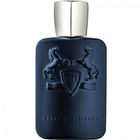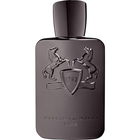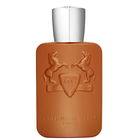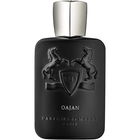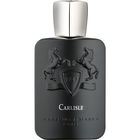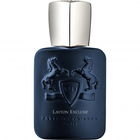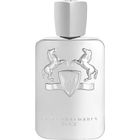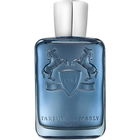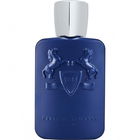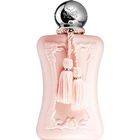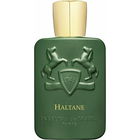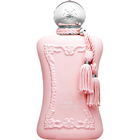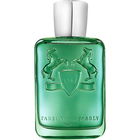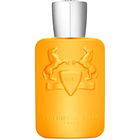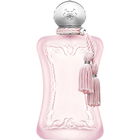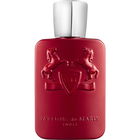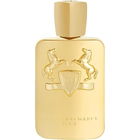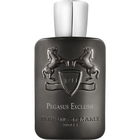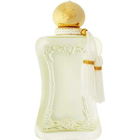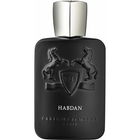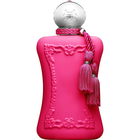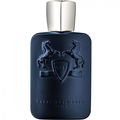The fragrance "Lippizan" is clearly dedicated to the horse breed of the Lipizzaners. They originate from the Slovenian stud Lipica and were created there through breeding at the end of the 18th century. Since these horses are intelligent and trainable, they are particularly well-suited for dressage. They were widely used at the Spanish Riding School in Vienna, gaining worldwide fame as a result. Typically, Lipizzaners are gray, but there are also other colors among them.
I have had the Lipizzaner in my stable, uh, perfume cabinet for eight years. I always found it good. However, only over time - especially in the last few months - have I developed a love for it. To be honest, I didn't really understand it before. So once again (see for example
Citrus Paradisi), this is a fragrance that needs to make a "click!" to grasp its beauty.
"Lippizan" is an old-school representative of the green-leathery Chypres. As you perfume aficionados surely know, a Chypre is a classic fragrance concept that opens with citrus notes and develops through a floral heart to a cologne base (made of oakmoss, labdanum, and patchouli). There are numerous variations of it, for example, by adding leather notes. This fits perfectly with some Fougère-like green notes such as basil or tarragon. Then you have a green-leathery Chypre. In the case of "Lippizan," the latter is true, meaning it contains both citrus and green notes.
Green-leathery Chypres are one of my favorite fragrance directions. In short, my favorite fragrance directions are masculine rose scents (e.g.
Red Sea), gentleman scents, and extraordinary yet wearable fragrances (e.g.
Classic 1920). Among gentleman scents, I consider primarily vetiver scents (e.g.
Vetiver Eau de Toilette), Chypres (e.g.
Moustache Eau de Toilette Concentrée or
Eau de Rochas (2015)), and Fougères (e.g.
Platinum Égoïste Eau de Toilette). And among Chypres, the green-leathery Chypres (e.g.
Versace L'Homme Eau de Toilette) are my favorite category.
While we're theorizing (which someone with my Parfumo username is allowed to do, hehehe...), here's another note: The line between green-leathery Chypres and leathery Fougères (e.g.
Pour Lui Eau de Toilette) is razor-thin. The measure for distinction, in my opinion, is the "woodiness" and soapiness (barbershop style) of a fragrance. Indicators for me are tree resins (fir, spruce, pine) and lavender. But there is also a green-leathery Chypre with spruce and lavender, namely "Devin (Eau de Cologne) | Aramis." So, as you can see, the boundary area is shimmering. It gets even more complicated when you add the Aromatic Fougères, which also usually contain leather (like
Xeryus Eau de Toilette or
Azzaro pour Homme Eau de Toilette).
Citrusy, herbal, bitter, and cologne-like, the Lipizzaner opens. Citrus and sage, along with their little sibling tarragon, mainly create this impression. They are supported by the two aromatic spices thyme and cardamom. The green notes of the heart (vetiver and galbanum) and the base (oakmoss) also contribute to the green herbaceousness.
This uncompromising opening may not appeal to everyone. But that likely applies to the opening of many Chypres. Over time, Chypres - including this one - become more tolerable and softer. Therefore, you need not fear a nose-wrinkling environment half an hour after spraying on Lippizan.
The sage in a citrus-green environment initially posed difficulties for me. Then I realized that sage doesn't have to be musty at all. Sage candies are quite "un-herbaceous," rather fresh, almost fruity. And so I cautiously approached the sage in Lippizan. By now, I wouldn't want to miss it in this fragrance. I enjoy the bitter-sour opening to the fullest (no, breathfully...).
The heart of the Lipizzaner is distinctly more settled. The citrus disappears, the strong herbaceousness gives way to an elegant, slightly herbal, slightly bitter green (with a hint of cedarwood). As is little surprising for a Chypre, floral notes join in, albeit in a discreet dosage. I believe I can recognize rose and jasmine with a bit of goodwill, but there is no trace of iris.
Even though geranium is not included, the bitter-herbaceous and slightly floral aura of the heart is reminiscent of that of a geranium. This Chypre heart is extremely masculine and reminds me of "G-man (Eau de Cologne) | Gainsboro / Gainsborough." To be honest, I would have bet that Lippizan is 100 percent men's territory. Respect to the three Parfumo ladies who also claim Lippizan as their own, alongside 34 Parfumo gentlemen.
The cologne base of the Lipizzaner is wonderfully soft. Gently dosed creamy musk and a light, dry, unsweet vanilla soften the rough fragrance notes of oakmoss and leather elegantly and create a hint of "Oriental Chypre" atmosphere.
As comparison fragrances, I mention "Boss Spirit (Eau de Toilette) | Hugo Boss," "Safari for Men (Eau de Toilette) | Ralph Lauren," and
Godolphin:
-) Boss Spirit is a green-leathery Chypre with a sharp herbaceousness (which mainly comes from tarragon) at the beginning, but without citrus. However, its base is quite different, characterized by ambered leather.
-) Safari for Men is a green-leathery Chypre with numerous extensions (woody, rosy, oriental). As its name suggests, it thematizes desert-like dryness. I also perceive the heart of Lippizan as dry. In this respect, there is a certain parallel, even if the fragrances smell quite different. After all, they share the fragrance type (green-leathery Chypre) and some fragrance notes (such as tarragon and rose).
-) Godolphin is another bitter-herbaceous scent from the same house, namely Parfums de Marly. It has a kinship with "Tuscan Leather (Eau de Parfum) | Tom Ford," but it is not a fragrance twin. I prefer it significantly due to the stronger green and the absence of raspberry.
The house of Parfums de Marly (PdM) has changed its style significantly in recent years. From daring old-school style to modern mass taste. I actually no longer consider PdM a niche brand, even though they charge niche prices for their creations. I can't connect with the new works of the house. They are not bad, but they don't touch me. Well, then I will just enjoy their older fragrances Lippizan (2010) and Godolphin (2011). I can only recommend these to all lovers of old-school gentleman fragrances.
Thus, "Lippizan" and this review are a love letter to the fragrance type of the green-leathery Chypre. It reminds me of Shakespeare (from "The Taming of the Shrew): "I languish, I burn, I die!" Well, one doesn't need to die because of this fantastic fragrance, but a olfactory "little death" ("petite mort") is certainly in order.







 Top Notes
Top Notes  Clary sage
Clary sage Tarragon
Tarragon Bergamot
Bergamot Thyme
Thyme Cardamom
Cardamom Lemon
Lemon Heart Notes
Heart Notes  Cedarwood
Cedarwood Galbanum
Galbanum Jasmine
Jasmine Patchouli
Patchouli Vetiver
Vetiver Iris
Iris Rose
Rose Base Notes
Base Notes  Leather
Leather Moss
Moss Amber
Amber Musk
Musk Vanilla
Vanilla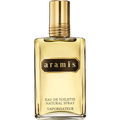


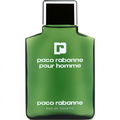

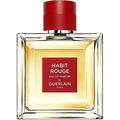

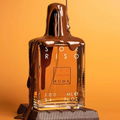




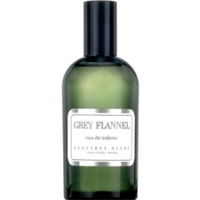

 Eggi37
Eggi37 Chizza
Chizza Konst121
Konst121 Chnokfir
Chnokfir Heldenvater
Heldenvater FRAgrANTIC
FRAgrANTIC Sirbennyone
Sirbennyone HaJo1973
HaJo1973 MrTinkles
MrTinkles Prokion
Prokion